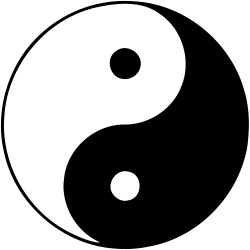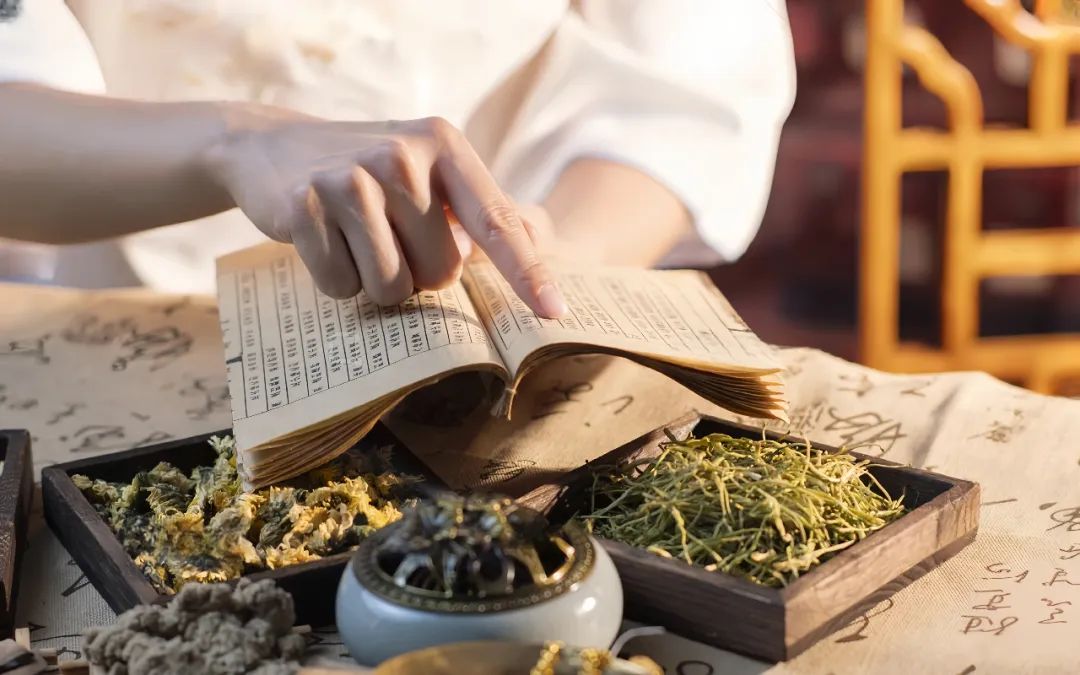
1. What is Dampness?
Everyone knows that summer is a season characterized by the interaction of “heavenly qi” and “earthly qi.” What does this mean? It means that the “heavenly qi” descends to form rain, while the “earthly qi” evaporates moisture from the ground back into the atmosphere. This interaction makes the moisture in the air dense, resulting in dampness.
Therefore, summer is the season with the heaviest dampness.
In such an environment, it is natural to be affected by dampness. Dampness is very cunning; once it enters the human body, it can collude with various pathogenic factors. When it encounters cold, it becomes cold-damp; when it encounters wind, it becomes wind-damp; when it encounters heat, it becomes damp-heat; and when it encounters phlegm, it becomes phlegm-damp.
2. What is Phlegm?
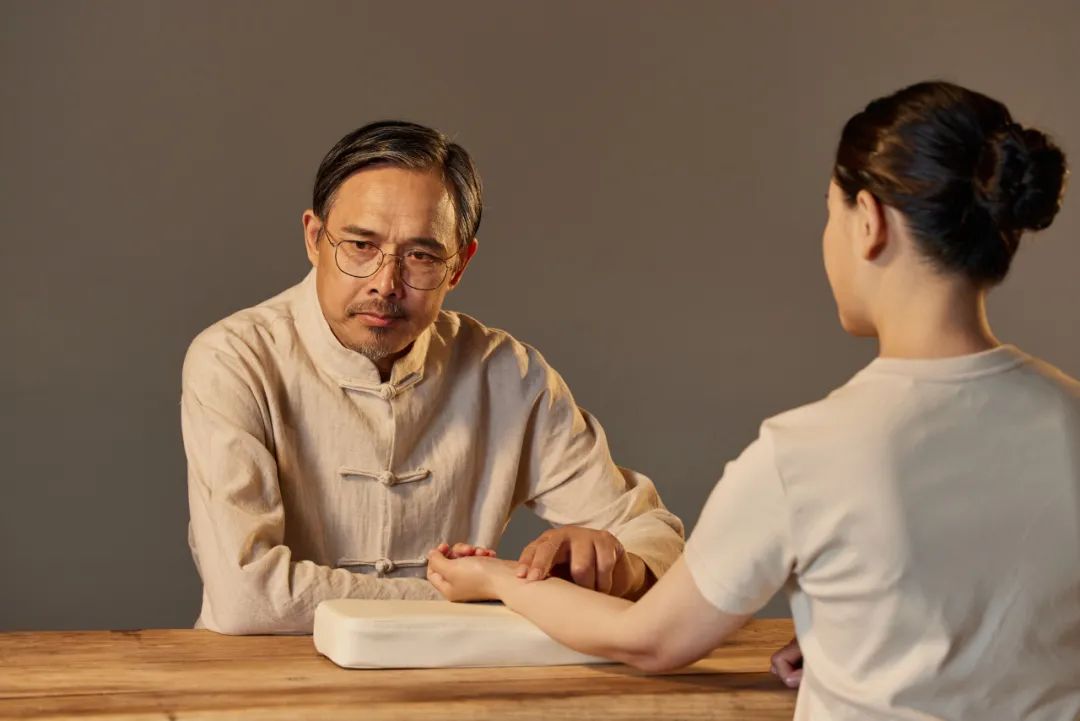
The phlegm in phlegm-damp is not entirely the same as the phlegm one expels!
Traditional Chinese Medicine (TCM) believes that dampness and phlegm have a mother-son relationship. Dampness is a very sticky substance that is difficult to expel once it enters the body. Therefore, TCM states: “Cold is easy to dispel, but dampness is hard to remove.”
When this sticky dampness lingers in the body for a long time, it transforms into an even stickier substance, which is phlegm.
Phlegm-damp is very sticky and troublesome. If it lingers in the body for a long time, can our bodies still feel comfortable? TCM has a saying: “Strange diseases are all caused by phlegm,” meaning that some common ailments that are hard to treat may have their roots in phlegm. Once phlegm is resolved, the illness can naturally improve.
This includes the modern common “three highs” (high blood pressure, high blood sugar, and high cholesterol), which thrive in a phlegm-damp environment, as well as some difficult-to-treat conditions that are also rooted in phlegm, such as epilepsy caused by phlegm-fire attacking the head.
Phlegm-damp is so frightening that many friends may wonder if they have a phlegm-damp constitution. Below, we will identify the characteristics of a phlegm-damp constitution and how to regulate it!
A phlegm-damp constitution is characterized by the accumulation of phlegm and dampness due to the stagnation of body fluids, with a primary feature of being sticky and turbid.
Physical Characteristics: Obesity, with a soft and full abdomen.
Psychological Characteristics: Generally mild-mannered, steady, humble, and tolerant.
Manifestation Tendencies: Oily skin on the face, slightly swollen eyelids, easy to feel drowsy, heavy body, excessive sweating that feels sticky, a sticky mouth, chest tightness, excessive phlegm, and a preference for rich, sweet, and sticky foods.
Adaptability to External Environments: Poor adaptability to the plum rain season and humid environments.
Tongue Manifestation: White and greasy tongue coating.
3. Lifestyle Regulation
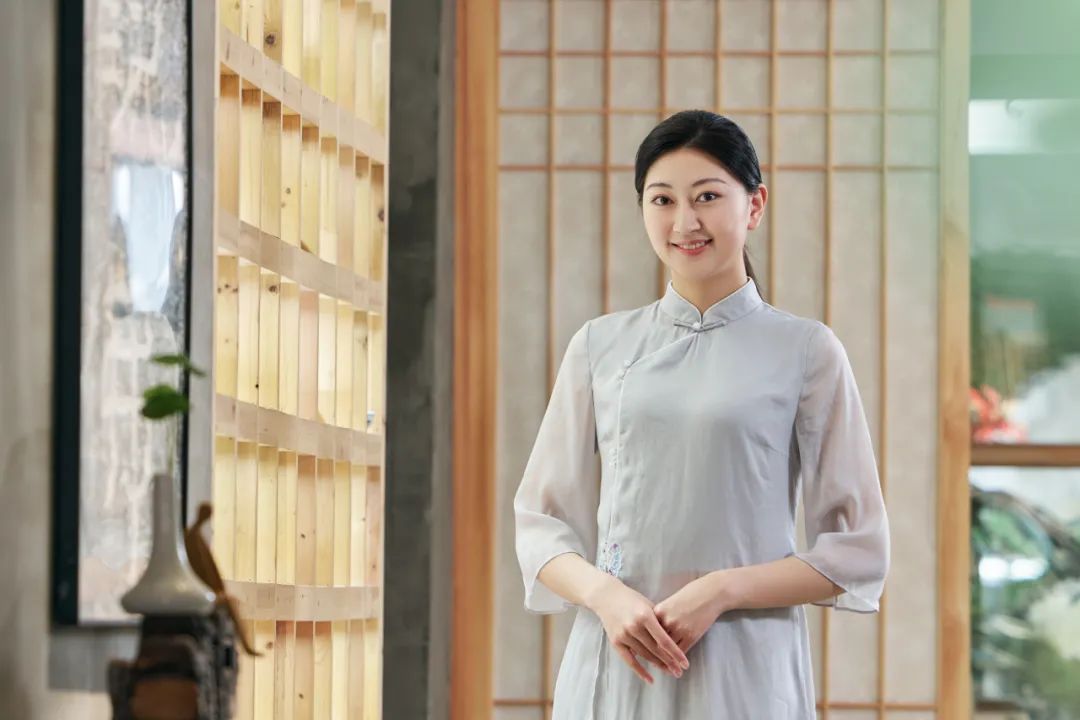
Avoid staying in damp environments for long periods. During the rainy season, be cautious to avoid the invasion of dampness. People with this constitution should also regularly check their blood sugar, blood lipids, and blood pressure.
Do not be overly comfortable or indulge in bed; engage in outdoor activities to keep the body’s functions active.
Take hot showers and sweat appropriately. Wear loose clothing made of breathable natural fibers like cotton, linen, and silk to facilitate sweat evaporation and eliminate internal dampness.
Pay attention to warmth; “dampness moves with warmth and congeals with cold.” Cold weather is not conducive to the transformation of dampness in the body and often harms the spleen and stomach, so the phlegm-damp constitution is more pronounced in cold weather.
In summer, minimize the use of air conditioning, wear cotton, linen, or silk, and get adequate sunlight. During damp and cold seasons, reduce outdoor activities to avoid getting cold or wet, and maintain a balance between work and rest to avoid excessive worry.
4. Dietary Regulation
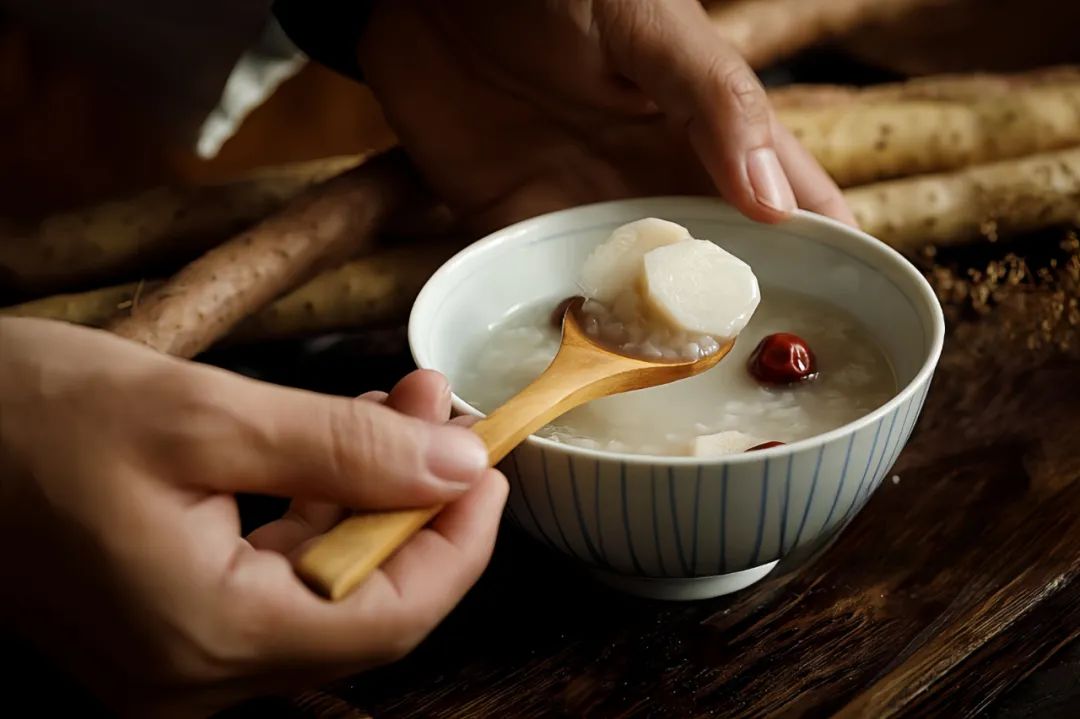
In terms of diet, avoid rich and greasy foods, alcohol, and limit salt intake.
Chew slowly, eat until 70% full, and drink water in small sips, preferably warm. Otherwise, it may lead to bloating in the spleen and stomach, promoting the phlegm-damp constitution. Avoid overeating and eating too quickly.
Maintain regular eating times and amounts, avoid picky eating, consume a variety of foods, do not skip breakfast, and always have breakfast.
For dietary therapy, choose foods that strengthen the spleen and eliminate dampness, benefit the lungs and kidneys, and promote the flow of the San Jiao (Triple Burner), such as chicken, pig stomach, lamb, freshwater fish, winter melon, celery, shiitake mushrooms, carrots, huai yam, lentils, red beans, coix seed (Job’s tears), poria (Fu Ling), and Buddha’s hand (Fo Shou).
Avoid excessive consumption of rich, greasy, and astringent foods, such as tremella (white fungus), persimmons, loquats, sugar, and various high-sugar beverages.
Common medicinal ingredients for strengthening the spleen and eliminating dampness include poria (Fu Ling), white lentils (Bai Bian Dou), white atractylodes (Bai Zhu), coix seed (Yi Yi Ren), and fox nut (Qian Shi).
Note: Eliminating dampness can be done through strengthening the spleen or clearing heat.
Strengthening the Spleen and Eliminating Dampness: When the body is weak, and the spleen cannot transform water and dampness, leading to phlegm-damp syndrome, it is like a dehumidifier malfunctioning, causing water and dampness to accumulate. In this case, it is necessary to nourish the spleen to restore its function to eliminate water and dampness, which is strengthening the spleen and eliminating dampness.
Clearing Heat and Eliminating Dampness: When the body is robust, and excess damp-heat accumulates, leading to damp-heat syndrome, it is like a dehumidifier functioning normally but overwhelmed by too much damp-heat. In this case, it is necessary to add a fan to help dry and cool the excess dampness and heat, which is clearing heat and eliminating dampness.
If one with spleen deficiency mistakenly uses clearing heat and eliminating dampness, it is like adding frost to snow. Therefore, those with spleen deficiency and cold-damp should be cautious with cold and cooling herbs such as houttuynia (Yu Xing Cao), purslane (Ma Chi Xian), artemisia (Yin Chen), and plantago (Che Qian Cao).
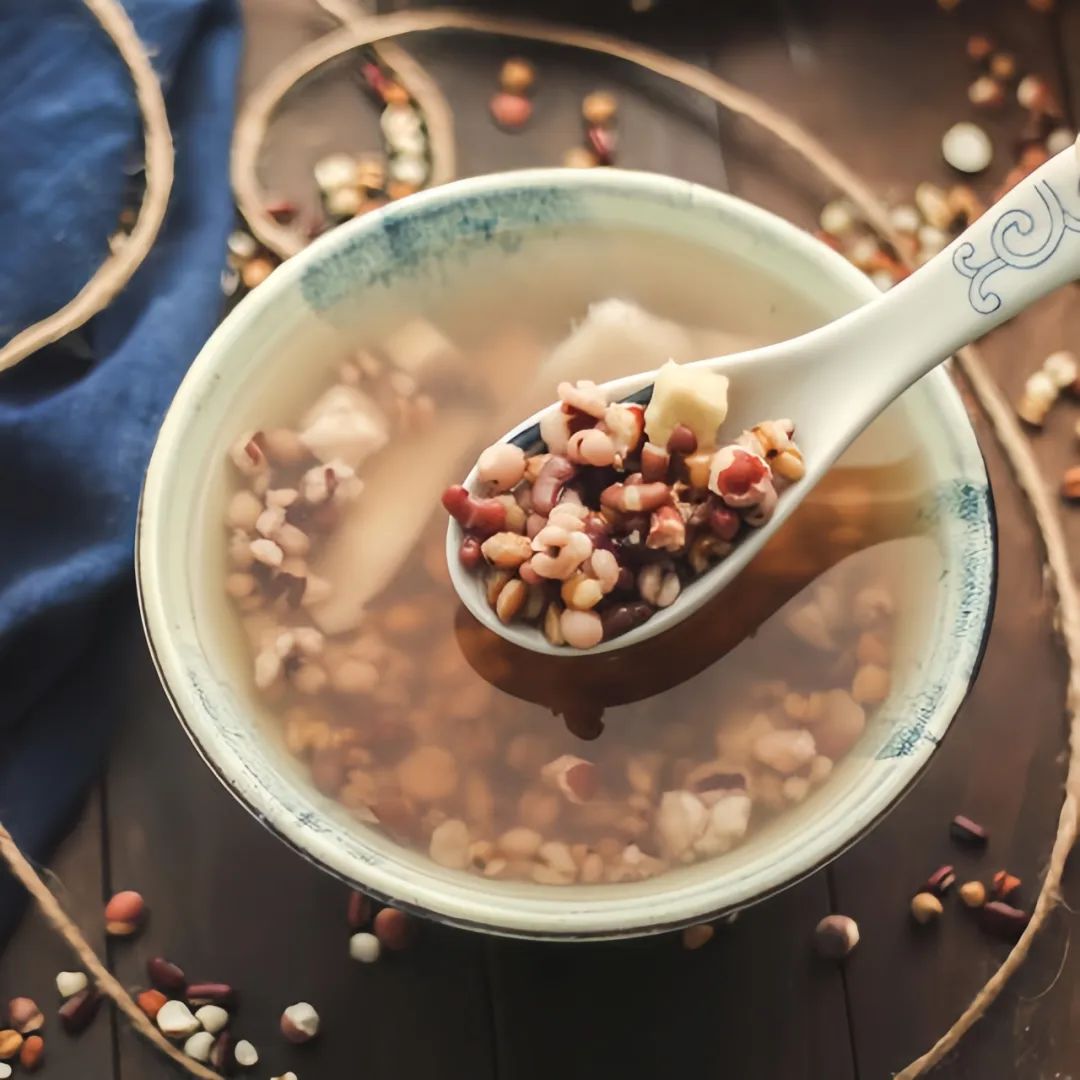
1. Poria and Yam Congee
Ingredients: 20g poria (Fu Ling), 20g dried yam, one serving of rice, a little oil and salt.
Method: First, decoct the poria and yam, strain to obtain the juice, and cook with rice to make a thin congee. Season with oil and salt.
Usage: Consume 2-3 times a week.
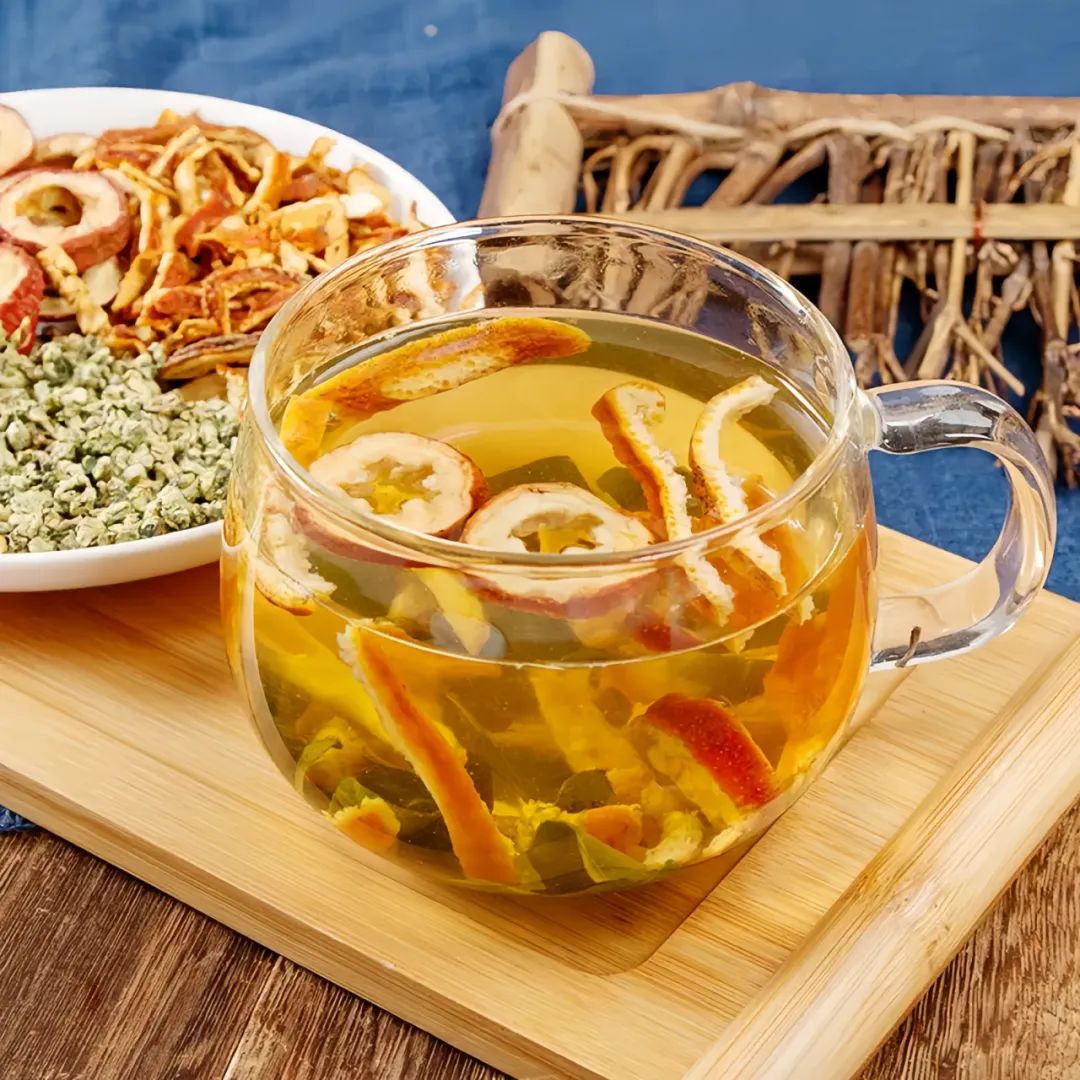
2. Dried Tangerine Peel, Hawthorn, and Malt Tea
Ingredients: 10g dried tangerine peel, 10g hawthorn, 10g malt.
Method: Place the dried tangerine peel, hawthorn, and malt into a pot. Add 800ml of water, bring to a boil over high heat, then simmer for 20 minutes.
Effect: Dried tangerine peel regulates qi, strengthens the spleen, and eliminates dampness and dryness. Combined with hawthorn and malt, it can eliminate dampness and dryness, aid digestion, and is suitable for those with a phlegm-damp constitution to drink regularly.
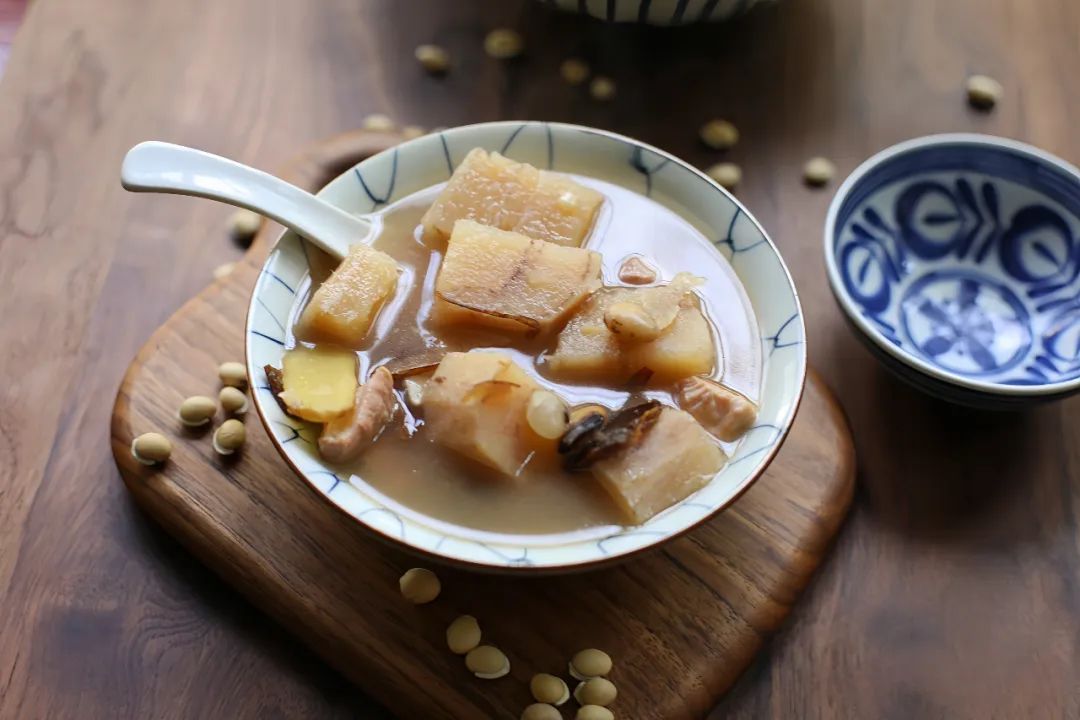
3. White Lentil Chicken Soup
Ingredients: 100g white lentils, 40g lotus seeds, 300g chicken thighs, 10g sand ginger, 5g salt.
Method: In a pot, combine 1500ml of water, chicken thighs, and lotus seeds. Bring to a boil over high heat, then simmer for 45 minutes. Pre-soak the white lentils, rinse, drain, and add to the pot with the other ingredients. Cook until the white lentils are soft, then add sand ginger, stir to dissolve, and season with salt before serving.
Effect: Both lentils and sand ginger have the effect of strengthening the spleen and eliminating dampness, while lotus seeds can also eliminate dampness and phlegm. Therefore, this dish is very suitable for those with a phlegm-damp constitution. White lentils have the effects of tonifying the spleen and stomach, harmonizing the middle, eliminating dampness, and detoxifying, making it very suitable for summer consumption.
5. Emotional Regulation

It is important to be good at regulating your emotions, maintaining a balance in mental and emotional states, being open-minded, loving life, and having a cheerful spirit. You can go to beautiful places like gardens or scenic spots to relax, or climb mountains to watch the sunrise.
Do not overthink things, and engage in activities like playing musical instruments, chess, calligraphy, singing, dancing, or socializing with friends.
Listen to some upbeat and invigorating music, such as guqin (a traditional Chinese string instrument) or sheng (a mouth organ) pieces from folk music.
Make friends widely, expand social activities, and relieve emotional stress.
6. Consistent Exercise
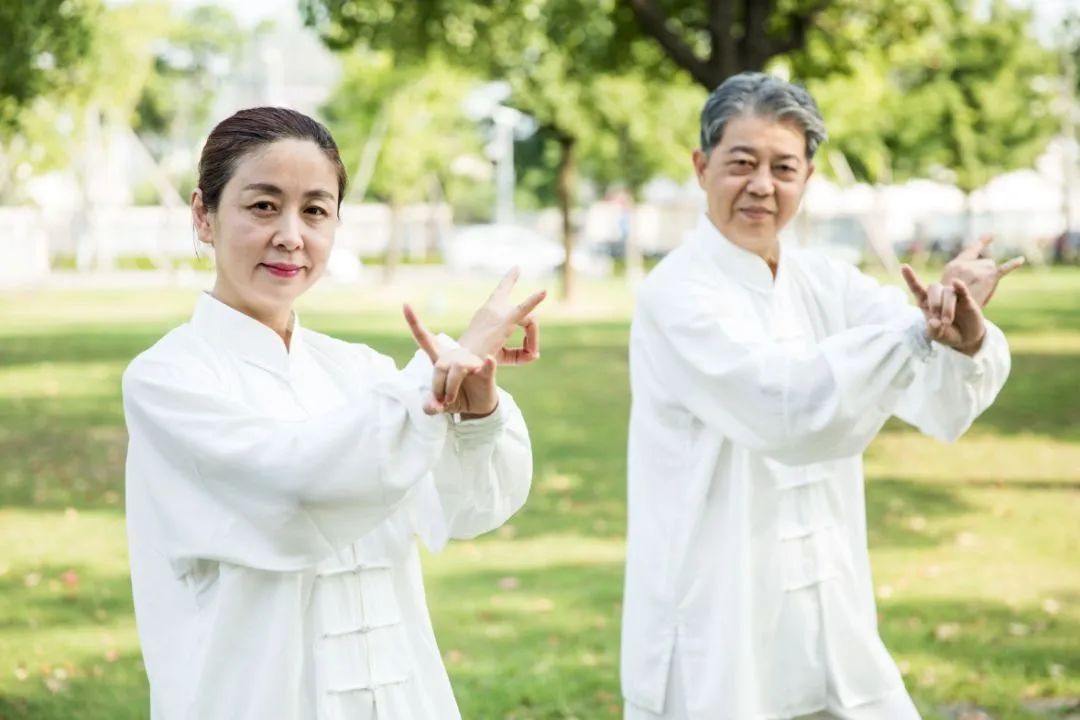
Choose moderate-intensity exercises. If you opt for lower-intensity activities, you should extend the duration of exercise appropriately. Ensure you have sufficient exercise, such as hiking, jogging, cycling, table tennis, badminton, tennis, martial arts, swimming, Ba Duan Jin (Eight Pieces of Brocade), Tai Chi, or fitness dancing.
For those who are overweight or have poor land-based exercise capabilities, swimming is recommended to gradually transform loose flesh into firm and dense muscle.
Exercise should be done to the point of slight sweating without feeling fatigued.


•2024 Year of the Dragon, Detailed Analysis of the Zodiac Fortune! Come and see how your luck is in the Year of the Dragon!
• TCM: Removing blood stasis opens the vessels; a formula for promoting blood circulation!
• TCM: Illness arises from overexertion and from idleness!
• TCM: The five internal evils arise from internal heat, fluid damage, damp turbidity, cold generation, and wind movement!
• TCM: Knee pain is due to insufficient qi and blood; do this to regain vitality!
• Can’t criticize children for making mistakes? TCM explains the “Seven No Blame” principle!
• TCM: An ancient formula for treating headaches, eliminating the “four excesses” in the head, and banishing headaches!
• Taoist secret transmission, a miraculous guide for treating kidney deficiency, back pain, and leg pain!
• TCM: What to do about insufficient qi and blood? Here are five methods to easily replenish qi and blood!
